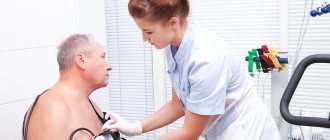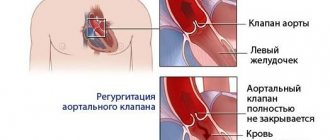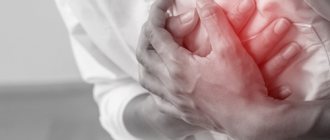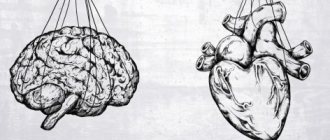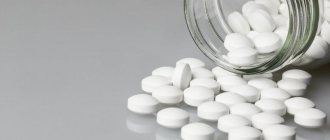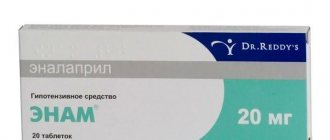Arterial hypertension of the 3rd degree is characterized by an increase in systolic pressure up to 180 mm R. Art. and diastolic – above 110 mm Hg. Art. In this case, blood pressure constantly exceeds the permissible norms and does not return to normal levels without drug treatment. The causes of stage 3 hypertension are varied: abuse of bad habits, obesity, sedentary lifestyle, endocrine disorders, hereditary predisposition.
The disease is accompanied by pronounced symptoms, which should be a reason to immediately visit a cardiologist. Treatment of the pathology is complex and carried out under the strict supervision of a specialist. Lack of therapy leads to serious complications affecting the heart, kidneys, brain, and visual system.
Degrees of hypertension and their characteristics
Arterial hypertension is a severe pathology, accompanied by an increase in blood pressure and the progression of associated complications. If the disease is advanced to stage 3, it is impossible to completely cure it, because the patient’s body is already accustomed to consistently elevated blood pressure. All his systems were rebuilt in a pathological way, regulating the processes of narrowing and dilation of blood vessels in a way that is not necessary.
Depending on the nature of the course and the degree of damage to the body, there are 3 stages of hypertension:
- First degree. The mild stage is characterized by an increase in tonometer readings to 140 – 159/90 – 99 mm Hg. Art. The course of the disease is unstable, accompanied by periods of remission and exacerbation. If you start treatment at the first stage, you can completely get rid of the disease and prevent its progression. Therapy consists of lifestyle changes and rarely involves the use of medications.
- Second degree. At this stage, the pressure rises to 160 – 179/100 – 109 mm Hg. The disease begins to manifest itself with pathological symptoms: painful headaches, discomfort and pain in the heart area, shortness of breath, dizziness, tremor. The second stage is dangerous because internal organs, especially the eyes, are involved in the pathological process. Treatment is only medicinal, under the strict supervision of a doctor. It is impossible to get rid of the pathology at stage 2, but by following the basics of a healthy lifestyle and undergoing preventive drug treatment, you will be able to achieve remission and return to normal life.
- Third degree. Blood pressure reaches 180/110 and higher. The patient's condition is defined as serious, requiring urgent medical attention. At the third stage, the vessels experience serious stress, and the cardiovascular system undergoes irreversible pathological changes. If high blood pressure is not stopped, the risk of developing myocardial infarction, acute heart failure, angina pectoris, arrhythmia and other complications increases. Also at this stage there is a high risk of a hypertensive crisis, in which the pressure rises sharply and all the symptoms of hypertension worsen. To control the condition, the patient is forced to constantly take hypertensive medications prescribed by the doctor.
How does the development of hypertension affect the body?
Hypertension systematically destroys blood vessels, narrowing the lumens. But its effect on the body is not limited to this. First of all, the disease affects target organs:
Classification of arterial hypertension
- heart;
- kidneys;
- brain;
- eyes.
The disease affects the heart by dilating the left ventricle. At the same time, the elastic properties of the myocardium decrease, the walls thicken, which over time leads to the development of heart failure. The risk of heart attack increases.
The kidneys must be fully supplied with blood. If the pressure is constantly high, the blood supply deteriorates, the kidneys do not receive nutrients, and their functions are impaired. At this stage of hypertension, renal failure is often diagnosed.
The brain suffers no less. Sclerotic changes reduce the tone not only of blood vessels, but also of intervertebral arteries. The brain stops receiving the necessary dose of oxygen and nutrients. Against the background of this condition, memory, attention, and intelligence deteriorate, encephalopathy develops, blood clots form, and the likelihood of a stroke increases.
Many patients of cardiologists are faced with such a complication of hypertension as retinal damage. Vessels burst, visual acuity decreases, and a feeling of chronic fatigue appears with minimal stress on the visual organs.
No ads 1
Risks 1-4 with end-stage hypertension
Depending on the likelihood of developing complications that threaten the health and life of the patient, in cardiological practice there are 4 risk factors, each of which has its own characteristics and course.
Risk 1 (low)
It develops extremely rarely in stage 3 arterial hypertension. It is often diagnosed in patients who have just encountered pathology. Timely treatment and lifestyle adjustments help control the condition and prevent more serious complications. With hypertension occurring at the last stage, such a condition is in principle impossible, because the disease makes itself felt all the time and is almost always unpredictable.
Risk 2 (medium)
The average risk is also uncharacteristic of hypertension, which occurs at stage 3. In this case, the risk of developing complications from the cardiovascular system, as well as damage to target organs, does not exceed 10–12%. Medium risk is more common in stage 1–2 arterial hypertension, subject to the presence of several factors, under the influence of which the outcome of the disease may worsen.
Risk 3 (high)
The high risk of hypertension indicates that the risk of developing cardiovascular complications and target organ damage increases significantly. The probability of death in this case is 15–25%.
To maintain the life and health of the patient, regular drug therapy and lifestyle changes are necessary. A grade 3 risk is still not a death sentence, but it is no longer an indication of a favorable outcome of the disease.
Risk 4 (extremely high)
Risk 4 for stage 3 hypertension is the most likely picture of the course of the pathology at this stage of progression. The probability of severe complications and death is in the range of 30–50% or higher. Complex drug therapy and regular blood pressure monitoring will help reduce the rate to 25–30%, but doctors will not be able to guarantee one hundred percent survival.
At extremely high risks, severe complications develop, accompanied by damage to target organs. The therapy regimen is changed regularly, on average 2–4 times a year. During the treatment period, the patient is indicated for hospitalization. In a hospital setting, the doctor will be able to monitor the dynamics of treatment and, if necessary, make adjustments.
Risk assessment for arterial hypertension and modern aspects of antihypertensive therapy
Arterial hypertension (AH) is one of the main risk factors for the development of coronary heart disease (CHD), including myocardial infarction, and the main cause of cerebrovascular diseases (in particular, cerebral stroke). In Russia, the share of mortality from cardiovascular diseases in total mortality is 53.5%,
Moreover, 48% of this share accounts for cases caused by ischemic heart disease, and 35.2% – for cerebrovascular diseases.
It is important to note that in the working-age population, vascular diseases of the brain are detected in 20% of people, of whom 65% suffer from hypertension, and among patients with cerebrovascular accidents, more than 60% have mild hypertension. Strokes in Russia occur 4 times more often than in the USA and Western European countries,
although mean arterial pressure (BP) in these populations varies slightly (WHO/IAS, 1993) [1]. This explains the importance of early diagnosis and treatment of hypertension, which helps prevent or slow down the development of organ damage and improve the patient’s prognosis.
As stated in the WHO Expert Committee Report “Combating Arterial Hypertension” (1996), examination of a patient with a newly detected increase in blood pressure includes the following tasks:
• Confirm the persistence of the increase in blood pressure; • Assess overall cardiovascular risk; • Identify the presence of organ lesions or concomitant diseases; • As far as possible, determine the cause of the disease.
Thus, the process of diagnosing hypertension consists of a fairly simple first stage - detection of elevated blood pressure and a more complex next stage - identifying the cause of the disease (symptomatic hypertension) and determining the prognosis of the disease (assessment of the involvement of target organs in the pathological process, assessment of other risk factors) [1] .
Until recently, the diagnosis of hypertension was made in cases where, during repeated measurements, systolic blood pressure (SBP) was at least 160 mmHg. or diastolic blood pressure (DBP) – at least 95 mm Hg. (WHO, 1978). These recommendations were based on cross-sectional surveys of large populations. Hypertension was defined as a condition in which the blood pressure level exceeds the average values of this indicator in a given age group by an amount greater than twice the standard deviation.
In the early 90s, the criteria for hypertension were revised in the direction of tightening them. According to modern concepts, hypertension is a persistent increase in SAD140 mmHg. or DADi90 mm Hg. (Table 1) [2].
In people with increased emotionality, as a result of a stressful reaction to the measurement, inflated numbers may be recorded that do not reflect the true state. As a result, erroneous diagnosis of hypertension is possible. To avoid this condition, called the “white coat” syndrome, rules for measuring blood pressure have been developed. Blood pressure should be measured with the patient sitting, after 5 minutes of rest, 3 times with an interval of 2–3 minutes.
True blood pressure is calculated as the arithmetic mean between the two closest values.
Blood pressure is below 140/90 mmHg. Art.
It is generally accepted to be considered normal, but this level of blood pressure
cannot be considered optimal
, given the likelihood of subsequent development of coronary artery disease and other cardiovascular diseases.
The optimal level of blood pressure from the point of view of the risk of developing cardiovascular diseases was established after the completion of several long-term studies that included large groups of the population. The largest of these prospective studies was the 6-year MRFIT study (Multiple Risk Factor Intervention Trial, 1986). The MRFIT study included 356,222 men aged 35 to 57 years without a history of myocardial infarction. Analysis of the data obtained showed that the 6-year risk of developing fatal CHD is the lowest among men with an initial DBP below 75 mm Hg.
Art. and SBP below 115 mm Hg. Mortality from coronary artery disease is increased at DBP levels between 80 and 89 mm Hg. and SBP from 115 to 139 mm Hg. Art., which are conventionally considered “normal”. So, with an initial DBP of 85–89 mm Hg. Art. the risk of developing fatal CAD is 56% greater than in individuals with DBP below 75 mm Hg. Art. At initial SBP 135–139 mmHg. Art. the likelihood of dying from coronary artery disease is 89% higher than in people with SBP below 115 mmHg. Art. Therefore, it would not be surprising if the criteria for diagnosing hypertension will be even more stringent in the future [2].
The tactics for managing a patient when elevated blood pressure levels are detected are discussed in detail in the VI report of the US Joint National Committee on the Prevention, Detection and Treatment of High Blood Pressure (JNC-VI, 1997) (Table 2).
Similar recommendations for monitoring patients after the first blood pressure measurement are given by the WHO Expert Committee on Blood Pressure Monitoring (1996). Depending on the specific situation (previous blood pressure levels, the presence of organ damage and other cardiovascular diseases and their risk factors), the blood pressure monitoring plan should be adjusted.
Establishing a final diagnosis of hypertension with classification by blood pressure level, determining the risk of developing cardiovascular complications based on the involvement of target organs in the pathological process and the presence of other risk factors means the start of treatment for the patient. Since this process can be extended over time, in some cases (severe hypertension, numerous risk factors and other circumstances) diagnosis and treatment proceed in parallel [1].
The goal of modern antihypertensive therapy is cardio- and vasoprotection, leading to a reduction in the incidence of complications and death.
Early diagnosis of hypertension is of great importance in order to provide effective intervention before changes occur in target organs [2].
If elevated blood pressure values are detected, the patient is given recommendations for lifestyle changes
, which are the first step in hypertension therapy (Table 3) [2, 3].
According to the TOMHS study (Treatment of Mild Hypertension Study, 1993), if you follow the recommendations given in table. 3, in patients with hypertension without the use of medications, it was possible to quite significantly reduce blood pressure (on average by 9.1/8.6 mm Hg compared to 13.4/12.3 mm Hg among patients receiving additionally one of the effective antihypertensive drugs). As the TOMHS study showed, lifestyle changes can not only reduce blood pressure, but reverse the development of left ventricular (LV) hypertrophy.
. Thus, in the control group of patients with hypertension over 4.4 years of observation, the mass of the LV myocardium decreased by 27±2 g, whereas in the groups of patients who additionally received antihypertensive drugs - by 26±1 g [2].
The JNC-VI report indicates that limiting lifestyle changes is permissible only in people with blood pressure less than 160/100 mm Hg, who do not have target organ damage, cardiovascular disease, or diabetes mellitus.
In all other cases, antihypertensive drugs should be prescribed in combination with lifestyle changes. In patients with heart failure, renal failure or diabetes mellitus, antihypertensive drugs are recommended even when blood pressure levels are between 130–136/85–89 mmM. Hg Art. (Table 4) [4].
In addition to lifestyle changes and drug therapy, it is necessary to mention non-drug therapy, which includes standardized physical activity, autogenic training, behavioral therapy using biofeedback, muscle relaxation, acupuncture, electrosleep and physiological bioacoustic influences (music) [1].
With a good effect from the use of an antihypertensive drug, many patients continue to lead their previous lifestyle, considering it easier to take one tablet of a long-acting drug in the morning than to follow recommendations that deprive them of the “joys of life.” It is necessary to conduct conversations with patients, explaining that with changes in lifestyle, it is possible to reduce the doses of medications over time.
It is necessary to dwell separately on the question of the level of blood pressure that should be strived for in the treatment of hypertension
.
Until the mid-1980s, there was an opinion that lowering blood pressure in elderly people with hypertension was not only not necessary, but it could cause undesirable consequences. Currently, the positive results of treatment of hypertension in the elderly have been convincingly demonstrated.
The SHEP, STOP-Hypertension, and MRC studies convincingly demonstrated a reduction in morbidity and mortality in these patients [5–7].
Situations when a doctor is forced to admit an elevated blood pressure level in a patient with hypertension are relatively rare and, as a rule, apply to patients with a long-term and severe illness. In the vast majority of cases of hypertension, one should strive to reduce blood pressure to a level below 135–140/85–90 mmHg. Art.
In patients under 60 years of age with mild hypertension, as well as in patients with diabetes mellitus or kidney disease, blood pressure should be maintained at 120–130/80 mmHg.
Art. [3]. However, uncompromising “normalization” of blood pressure may be unfavorable in elderly patients and in various forms of local circulatory failure (cerebral, coronary, renal, peripheral), especially if hypertension is partly compensatory in nature. Statistically, this is described as an iota-like dependence of vascular complications on blood pressure levels [8]. In this age group, atherosclerotic changes are more pronounced, and with a sharp decrease in blood pressure, ischemia may increase (for example, ischemic strokes against the background of clinically significant atherosclerosis of the carotid arteries). The pressure in such patients should be reduced gradually, assessing the general well-being and state of regional blood flow. The principle of “do no harm” is especially relevant in such patients. In addition, it is necessary to take into account concomitant pathology
: for example, the prescription of calcium channel antagonists (rather than b-blockers) for signs of obliterating atherosclerosis of the vessels of the lower extremities; reducing the dosage of drugs excreted by the kidneys in the presence of signs of renal failure, etc.
When choosing drugs, if possible, preference should be given to those that do not cause a significant deterioration in the patient’s quality of life and that can be taken once a day.
Otherwise, it is very likely that an asymptomatic patient with hypertension will not take a drug that worsens his well-being. A modern antihypertensive drug must have a sufficient duration of action, stability of effect, and a minimum of side effects. We should not forget about its price.
The relative value of drugs is determined at the present stage by carefully conducted multicentric studies, the criteria being absolute indicators: reduction in mortality from cardiovascular diseases (taking into account overall mortality), the number of non-fatal complications, objective indicators of the impact on the quality of life of patients and on the course of concomitant diseases [8] .
Antihypertensive drugs suitable for both long-term monotherapy and combination therapy are:
• thiazide and thiazide-like diuretics;
• thiazide and thiazide-like diuretics; • b-blockers; • ACE inhibitors; • antagonists of ATI receptors for angiotensin II; • calcium antagonists; • a1-blockers.
All of these drugs can be used to initiate monotherapy for hypertension.
In addition, it is necessary to mention the recently appeared group of
imidazoline receptor blockers (moxonidine)
, which are similar in action to central α2-adrenergic receptor agonists, however, unlike the latter, they are better tolerated and have a beneficial effect on carbohydrate metabolism, which is especially important in patients with diabetes mellitus. diabetes.
Loop diuretics are rarely used to treat hypertension. Potassium-sparing diuretics (amiloride, spironolactone, triamterene), direct vasodilators (hydralazine, minoxidil) and centrally and peripherally acting sympatholytics (reserpine and guanethidine), as well as central α2-adrenergic receptor agonists, which have many side effects, have been used in recent years only in combination with other antihypertensive drugs [2].
The expansion of the range of antihypertensive drugs has allowed some authors to put forward the concept of individualized choice of first-line drugs in the treatment of hypertension
[9, 10].
It should be noted that it is not the “strength” of the drug’s action that is decisive, since, contrary to popular belief, new antihypertensive drugs are not significantly superior to diuretics and
beta
-blockers in antihypertensive activity
. Given the similar effectiveness of antihypertensive drugs, when choosing them, one should take into account, first of all, tolerability, ease of use, effect on LV hypertrophy, renal function, metabolism, etc. When prescribing treatment, it is also necessary to take into account the allergy history.
In accordance with modern requirements for antihypertensive therapy, individual selection of the drug is also necessary, taking into account risk factors
.
In past years, until the early 90s, hypertension was considered only as a problem of lowering blood pressure. Today, hypertension should be considered and treated in conjunction with risk factors for cardiovascular diseases [11]. Factors influencing the prognosis in hypertension
(Table 5 [12]
I. Risk factors for cardiovascular diseases (CVD) 1. Used for risk stratification in hypertension:
• levels of systolic and diastolic blood pressure (grades I–III);
• men > 55 years old • women > 65 years old • smoking • total cholesterol level > 6.5 mmol/l • diabetes mellitus • family history of early development of cardiovascular diseases 2. Other factors that adversely affect the prognosis:
• decreased HDL cholesterol;
• increased LDL cholesterol; • microalbuminuria in diabetes mellitus; • impaired glucose tolerance; • obesity; • sedentary lifestyle; • increased fibrinogen levels; • high-risk socioeconomic group; • high-risk ethnic group • high-risk geographic region II.End-organ damage (TOD):
• LV hypertrophy (ECG, echocardiogram or radiograph)
• proteinuria and/or slight increase in plasma creatinine (1.2–2 mg/dl)
• Ultrasound - or X-ray signs of atherosclerotic plaque (carotid iliac and femoral arteries, aorta);
• generalized or focal narrowing of the retinal arteries. III. Associated clinical conditions (ACC) Cerebrovascular diseases:
• ischemic stroke;
• hemorrhagic stroke; • transient ischemic attack. Heart disease:
• myocardial infarction;
• angina pectoris; • revascularization of coronary arteries; • congestive heart failure. Kidney disease:
• diabetic nephropathy;
• renal failure (plasma creatinine > 2 mg/dl). Vascular disease:
• dissecting aneurysm;
• clinical manifestations of peripheral artery disease. Severe hypertensive retinopathy:
• hemorrhages and exudates;
• swelling of the optic nerve nipple.
The presence of several risk factors in a patient increases the risk of developing cardiovascular complications. The risk increases especially sharply with a combination of hypertension, obesity, hypercholesterolemia and hyperglycemia, known as the “deadly quartet” (Table 5).
Comparison of blood pressure levels and factors influencing the prognosis of hypertension allows the doctor to determine the risk of complications in patients with high blood pressure, which is an important factor in choosing the regimen and timing of treatment [1]. However, even with such a balanced approach to the treatment of hypertension, monotherapy does not allow normalization of blood pressure in all patients. If antihypertensive therapy is ineffective, you should change the drug you are taking or switch from mono to combination therapy.
When choosing drugs for combination therapy of hypertension, it is important to consider the additional pharmacological properties of these drugs, which may be useful for the treatment of concomitant diseases or syndromes (Table 6) [2].
Speaking about the adequacy of antihypertensive therapy, one cannot help but dwell on modern methods of monitoring its effectiveness. , blood pressure monitoring systems have increasingly become part of medical practice.
.
Compact wearable monitors operating on the basis of the Korotkoff method and/or using the oscillometric method have allowed doctors to monitor not only blood pressure at night (bedside monitors also provide this opportunity), but also in the patient’s usual conditions, under physical and mental stress. In addition, the accumulated experience made it possible to divide patients, depending on the nature of daily fluctuations in blood pressure
, into groups in which the risk of developing cardiovascular complications was significantly different.
• Dippe s – persons with a normal nighttime decrease in blood pressure (by 10–22%)
– 60–80% of patients with essential hypertension (EAH).
This group has the lowest risk of complications. • Non-dippe s – persons with insufficient reduction in blood pressure (less than 10%) – up to 25% of patients with EAH.
• Over-dipper, or extreme-dippers – persons with an excessive nighttime drop in blood pressure (more than 22%)
– up to 22% of patients with EAH.
• Night-peak s – persons with nocturnal hypertension
3-5% of patients with EAH in whom night-time blood pressure exceeds daytime blood pressure.
Disturbed circadian rhythm of blood pressure in EAH is observed in 10–15%, and in symptomatic hypertension and some other conditions (sleep apnea syndrome, condition after kidney or heart transplantation, eclampsia, diabetic or uremic neuropathy, congestive heart failure, widespread atherosclerosis in the elderly , normotensive patients with a family history of hypertension, impaired glucose tolerance) – in 50–95% of patients, which allows the use of the daily blood pressure index
(or the degree of nocturnal reduction in blood pressure) as an important diagnostic and prognostic criterion [13].
A cumulative analysis of national projects and individual studies conducted over the past 5 years allowed J. Staessen et al. (1998) propose the following standards for average blood pressure values based on daily monitoring data (Table 7).
Taking into account the high consistency of the results of individual national studies, the proposed values can be accepted as basic ones in other countries.
Currently, large-scale studies are ongoing on groups of healthy volunteers to clarify the levels of average daily, average daily and average night blood pressure that correspond to the norm [4].
In addition to average blood pressure numbers, an equally important indicator of the effectiveness of therapy is the time index
, which indicates what percentage of the time of the total monitoring duration the blood pressure level was above normal values.
Normally it does not exceed 25%.
However, in some patients with severe hypertension it is not possible to completely normalize blood pressure, the level of which decreases but does not reach normal, and the time index remains close to 100%. In such cases, to determine the effectiveness of therapy, in addition to the indicators of average daily, average day and average night blood pressure, you can use the area index
, which is defined as the area on the graph of elevated blood pressure above the normal level. By the severity of the decrease in the area index over time, one can judge the effect of antihypertensive therapy [13–14].
In conclusion, we note that the arsenal of modern antihypertensive drugs that can quickly reduce and effectively control blood pressure levels is quite large today. According to the results of multicenter studies, beta -blockers and diuretics
reduce the risk of developing cardiovascular diseases and complications and increase the life expectancy of patients.
Of course, preference is given to selective long-acting beta-blockers and the thiazide-like diuretic indapamide, which have a significantly lesser effect on lipid and carbohydrate metabolism. There is evidence of a positive effect on life expectancy of the use of ACE inhibitors (enalapril)
.
Data on the results of using calcium antagonists are heterogeneous, some multicenter studies have not yet been completed, but today we can say that preference is given to long-acting drugs. The final analysis of currently ongoing multicenter studies will make it possible in the coming years to determine the place of each group of antihypertensive drugs in the treatment of hypertension. References
1. Arabidze G.G., Belousov Yu.B., Karpov Yu.A. Arterial hypertension. Reference manual for diagnosis and treatment. – M. 1999; 40.
1. Arabidze G.G., Belousov Yu.B., Karpov Yu.A. Arterial hypertension. Reference manual for diagnosis and treatment. – M. 1999; 40.
2. Sidorenko B.A., Preobrazhensky D.V. A short guide to the treatment of hypertension. M. 1997; 9–10.
3. Sidorenko B.A., Alekseeva L.A., Gasilin V.S., Gogin E.E., Chernysheva G.V., Preobrazhensky D.V., Rykova T.S. Diagnosis and treatment of arterial hypertension. M. 1998; eleven.
4. Rogoza A.N., Nikolsky V.P., Oshchepkova E.V., Epifanova O.N., Rukhinina N.K., Dmitriev V.V. Daily blood pressure monitoring for hypertension (Methodological issues). 45.
5. Dahlof B., Lindholm L.H., Hansson L. et al. Morbidity and mortality in the Swedish trial in Old Patients with Hypertension (STOP-Hypertension). Lancet 1991; 338:1281–5.
6. MRC Working Party. Medical Research Council trial of treatment of hypertension in older adults: Principal results. Br Med J 1992; 304:405–12.
7. SHEP Cooperative Research Group. Prevention of stroke by antihypertensive drug treatment in older persons with isolated systolic hypertension. JAMA 1991; 265:3255–64.
8. Gogin E.E. Hypertonic disease. M. 1997; 400 s.
9. Kaplan N. Clinical hypertension. Williams and Wilkins. 1994.
10. Laragh J. Modification of stepped care approach to antihypertensive therapy. Am.J.Med. 1984; 77: 78–86.
11. Kobalava Zh.D., Tereshchenko S.N. How to live with arterial hypertension? – Recommendations for patients. M. 1997; 9.
12. Guidelines for the treatment of arterial hypertension 1999, WHO/MOAG. J Hipertens 1999; 17: 151–83.
13. Olbinskaya L.I., Martynov A.I., Khapaev B.A. Blood pressure monitoring in cardiology. M.: Russian doctor. 1998; 99.
14. Gorbunov V.M.
24-hour automatic blood pressure monitoring (recommendations for doctors). Cardiology1997; 6:83–4. Enalapril – Enap (trade name)
(KRKA)
| Applications to the article |
| Arterial hypertension – a persistent increase in SBP of 140 mm. Hg Art. or DBP = 90 mm. Hg Art. |
| In most cases of hypertension, one should aim to reduce blood pressure to below 135–140/85–90 mmHg. Art. |
| The 24-hour blood pressure index (the degree of night-time blood pressure reduction) is an important diagnostic and prognostic criterion |
At President-Med clinics you can
- undergo examination and treatment in more than 30 medical specialties, rehabilitation after strokes, surgeries, injuries,
- pass various types of tests (more than 5,000 types of tests and laboratory tests),
- undergo functional diagnostics (ultrasound, endoscopy: gastroscopy), ECG, installation and interpretation of ABPM and Holter ECG and others,
- pass a medical examination in one day, undergo a medical examination (for both organizations and individuals), undergo a medical examination (for both organizations and individuals),
- obtain all kinds of certificates - certificates from the traffic police and for admission to sports, to purchase weapons, to a sanatorium,
- if there is evidence, issue a certificate of temporary incapacity for work,
- draw up and receive other types of medical documentation,
- make any injections,
- use the services of one-day surgery or day hospital.
Prevention
Your healthcare provider will likely also suggest a variety of lifestyle changes, including:
- Maintaining a healthy weight;
- A diet rich in fruits, vegetables and low-fat dairy products;
- To give up smoking;
- Limiting salt intake in the diet;
- Limit alcohol consumption. For most adults, this means that it is normal to drink up to one drink per day for women of all ages and men over the age of 65, and up to two drinks per day for men 65 or younger;
- Exercise at least 30 minutes a day. These include walking, jogging, strength training, yoga, and cardio exercises such as cycling.
On your part, methodical adherence to medical recommendations and organization of the correct regimen are required. A healthy lifestyle is the path to recovery. Remember this.
Causes
The causes of hypertension are varied. Depending on the etiology, primary and secondary forms of hypertension are distinguished, the nature of which is significantly different.
Primary form
It is diagnosed in 50–60% of patients suffering from this type of disease. The disease develops against the background of damage to the heart muscle and blood vessels. Other internal organs do not participate in the development of pathology.
Primary hypertension is often a complication of such previously suffered diseases:
- Myocardial infarction. The attack is accompanied by an acute circulatory disorder in the heart muscle. After hospitalization and emergency medical care, the development of pathology can occur in 2 scenarios: the pressure will decrease or, conversely, increase.
- Acute or chronic heart failure. It occurs against the background of disruption of the heart muscle, which is unable to pump blood with sufficient intensity. Myocardial ischemia and infarction are common complications of acute or chronic heart failure.
- Ischemic disease. It often develops together with heart failure, and both pathologies have similar symptoms.
- Atherosclerosis of the aorta and its branches. It develops against the background of blockage of blood vessels by fatty plaques or persistent stenosis of the blood supply structures. To compensate for the resistance caused by the blockage of the vessel, the heart is forced to work harder. This leads to a stable increase in blood pressure and the development of chronic hypertension. But if you remove lipid deposits, your health will noticeably improve.
Secondary arterial hypertension
Secondary arterial hypertension develops against the background of other diseases and damage to internal organs. Common causes of its occurrence:
- hyperfunction of the thyroid gland;
- hypercortisolism;
- kidney pathologies: pyelonephritis, chronic renal failure, glomerulonephritis, cancer;
- osteochondrosis, vertebrobasilar syndrome;
- decompensated diabetes mellitus.
Make an appointment with a doctor
Folk remedies
When treating illness at home, many people prefer to use folk remedies. This therapy involves the use of medicinal plants that have a positive effect on the cardiovascular system.
You can treat the disease with the following recipes:
- Treatment can also be carried out with peppermint, cinquefoil, chamomile, and yarrow. These herbs go well together.
- Prepare a decoction of motherwort, horsetail, marsh cudweed, and valerian root. All plants must be taken in the same quantity. This remedy has diuretic effects and allows you to cope with single surges in blood pressure.
- Bee products and citrus fruits are actively used in the treatment of hypertension.
- You can treat with viburnum juice. To reduce blood pressure, it should be consumed three times a day, a quarter glass.
Folk remedies help cope with unpleasant symptoms of the disease and speed up the effectiveness of traditional therapy. Such recipes have proven their benefits over many centuries. People whose bodies do not tolerate medications well turn to this type of therapy. But it is important to remember that treatment of the disease with traditional recipes can only be carried out after consultation with a doctor.
Characteristic symptoms
Symptoms develop in isolation only in the case of the primary origin of the pathology. If hypertension is a complication of other diseases, the symptoms develop nonspecific.
General symptoms of stage 3 arterial hypertension:
- A sharp, unbearable headache localized in the occipital, temporal and parietal areas.
- Disorientation in space. An increase in blood pressure leads to dysfunction of the vestibular apparatus, as a result of which it is difficult for the patient to navigate in space.
- Ringing, noise in the ears.
- Weakness, drowsiness or, conversely, hyperactivity. In the latter case, the patient is very overexcited, it is difficult for him to relax and fall asleep even if he is very tired and feels unwell.
- Memory loss, slow thinking. The patient cannot always follow the meaning of the conversation and often forgets recent events.
- Arrhythmia. It manifests itself as a rapid or, conversely, pathologically rare heartbeat.
In the chronic course of hypertension, the symptoms are blurred. The pain in the head almost disappears and makes itself felt only periodically. Other suspicious symptoms may be completely absent.
Diagnostics
Hypertension stage 3 symptoms and treatment, it is necessary to diagnose it in time and start therapy as soon as possible. To establish an accurate diagnosis, the doctor gives a referral for a comprehensive diagnostic examination, including the following procedures:
- Blood pressure measurement. The method of daily blood pressure monitoring is often used. To do this, a portable device is installed on the patient’s lower back, and a cuff is placed on the shoulder. At certain points in time, the cuff is inflated, and a portable device records the pressure level.
- Blood and urine analysis.
- Assessment of cardiac muscle function. To do this, a physical diagnosis is carried out, during which heart rhythms are listened to with a phonendoscope, as well as an electrocardiogram - the same assessment of the work of the myocardial muscle, only more detailed. Additionally, the doctor may prescribe an ultrasound with Doppler, which will help determine the movement of blood through the vessels.
- Fundus examination. In case of hypertension, the organs of vision are among the first to be affected, therefore, to diagnose the pathology, a referral for an examination of the fundus by an ophthalmologist is required. Stage 3 hypertension is accompanied by changes in the condition of the optic nerve, deterioration of visual acuity, and impaired visual functions.
- Ultrasound of the kidneys. High blood pressure negatively affects the functioning and condition of the kidneys. With persistently high blood pressure, nephores die, which leads to the development of renal failure. Ultrasound will help identify such disorders and confirm a pre-established diagnosis.
Diet for hypertension
In order for the kidney vessels to function normally, hypertensive patients with any stage of the disease must adhere to certain nutritional rules. For example, it is important to control the water and salt balance of the body, to prevent the formation of stagnation and, as a consequence, stage 2 hypertensive crisis. Fatty, fried, sweet and smoked foods are prohibited.
Seven foods that lower blood pressure:
- Blueberries – Blueberries are rich in natural substances called flavonoids.
- Fresh leafy greens such as fenugreek leaves, kale, mint leaves, patchouli, dill greens, mustard leaves, curry leaves, beet greens, Swiss chard, arugula, broccoli, celery and spinach are high in potassium
- Potatoes - contain a lot of potassium and magnesium
- Beets – Nitrates in beet juice are known to lower blood pressure
- Skim milk is an excellent source of calcium plus low fat levels
- Oatmeal is a high-fiber, low-fat, low-sodium food.
- Bananas – Adds potassium to your diet.
Therapeutic nutrition for stage 2 hypertension allows boiled lean meats, cereals, vegetables and fruits on the menu. Green tea and diuretic herbal decoctions have beneficial properties.
Treatment methods
To stabilize blood pressure, the following groups of drugs are prescribed:
- calcium channel blockers;
- α and β-blockers;
- ACE inhibitors;
- diuretics;
- sedatives;
- medications that have a blood-thinning effect;
- vitamin and mineral complexes that strengthen the immune system.
In advanced cases, surgical intervention is performed. Indications for surgery for stage 3 hypertension:
- acute vascular stenosis;
- advanced atherosclerosis;
- renal pathologies;
- heart disease;
- aortic aneurysm.
Degrees of hypertension
CVEs are considered as complications of the cardiovascular system. These include hypertension. A hypertensive crisis (blood pressure rises sharply) can develop in patients, regardless of the stage of hypertension. Often a hypertensive crisis is accompanied by spots in the eyes, nausea, severe throbbing headaches, and severe dizziness. If a hypertensive crisis occurs, you should call an ambulance immediately. There are several degrees of severity of this disease. Let's look at them in more detail.
Cost of treatment for stage 3 hypertension
The cost of treatment for third-degree hypertension for each patient is calculated individually, taking into account factors such as:
- age and general condition of the patient;
- the presence of associated complications;
- etiology of the disease, etc.
It's cheaper with us
- Beneficial programs for annual placement, pregnancy management, medical examination and “check-up” with discounts from the price list to 25%
- Discounts for disabled people, veterans, pensioners 10%
- Discount on deposit program up to 25%
- Discounts on promotions and seasonal offers up to 50%
About therapy
IT IS IMPORTANT TO KNOW!
STILL STRUGGLE WITH ARTERIAL HYPERTENSION INCORRECTLY? Reduces stress hormone levels and prevents oxygen starvation Read more »
Treatment of any type of hypertension requires a complex effect; it is impossible to get rid of the disease with one miracle drug. We can talk about a complete cure only at the initial stage of the disease, while stage 3, especially with risk 4, involves the use of maintenance therapy as treatment, which will stop the progress of the disease.
The treatment regimen has the following components:
- Medicines. Various drugs from pharmaceutical groups, each of which has a specific effect on the body, helping to reduce blood pressure. These are drugs from ACE inhibitors (for example, Captopril), diuretics (diuretics, most often Furosemide or Hydrochlorothiazide), medications that inhibit the production of calcium in the body (such as Verapamil), beta blockers (Antenolol and Metoprolol), as well as calcium production inhibitors antiotensin. As a last resort medicine, doctors prescribe Irbesatran. Auxiliary medications include nootropics, vascular support agents, and medications that restore potassium balance and metabolism in the brain.
- Quitting bad habits and completely changing your lifestyle. Alcohol and smoking negatively affect not only the condition of blood vessels, but also brain activity in general. In the early stages of hypertension, giving up bad habits can lead to complete recovery without the use of medications. It is also important to add minimal physical activity, preferably outdoors, to your daily activities. For example, this could be a walk in the park at a fast pace or a swimming pool. However, the introduction of any physical activity and physical therapy requires prior approval from a doctor. At the fourth risk of third-degree hypertension, excessive physical and emotional stress is contraindicated.
- Review of diet. It is necessary to make adjustments not only to the name of the products and their quality, but also to the method of cooking. To unload blood vessels, it is necessary to avoid fatty, smoked, too salty and spicy foods. The menu is based on fruits, vegetables, low-fat dairy products, and nuts. Meat is allowed boiled or steamed. Fish is processed in a similar way. If you are predisposed to edema, you should reduce the amount of fluid entering the body. It is important to remember that nutrition for hypertension at such an advanced stage is no longer a diet, but nutrition on an ongoing basis, along with a changed lifestyle. As a drink, it is permissible to use plain water, herbal infusions and teas; it is forbidden to drink carbonated water and coffee.
